Exploring Ikuno and Asago: Easy Access from Himeji, Silver Mines, and Scenic Cycling Tours in Rural Japan

Easily accessible from Himeji, Ikuno is known for its silver mining history, beautiful countryside and is a great place to experience traditional architecture and local culture on a cycling tour.
When visitors think of exploring Japan, they often imagine the futuristic skyline of Tokyo, the traditional charm of Kyoto, and the vibrant energy of Osaka. While these major cities are certainly exciting, the beauty of Japan's countryside is often overlooked. Picturesque and rich in natural splendor, places like Ikuno in Hyogo Prefecture offer a unique glimpse into rural Japanese life. Steeped in history and surrounded by stunning landscapes, Ikuno provides the perfect escape from the hustle and bustle of the cities.
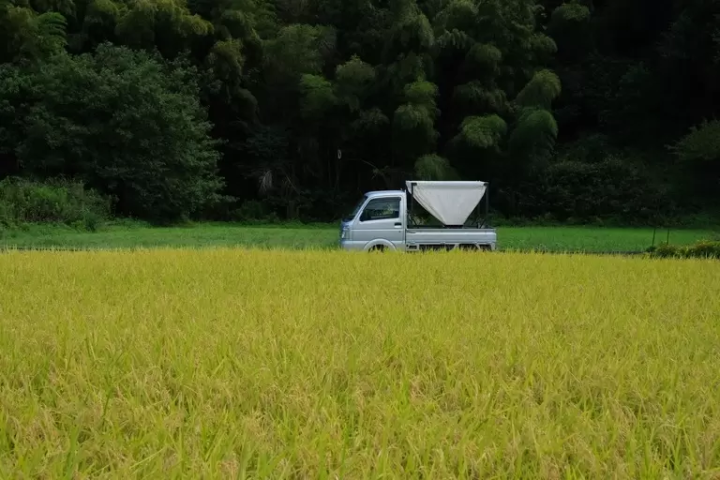
How about a trip to the colorful Japanese countryside ?
Ikuno stands out from other rural areas in Hyogo thanks to its silver mines, which brought both wealthy locals and foreign engineers to this area. While the mine was in operation (1542~1972), the town prospered, and the people living here built beautiful homes, often with a mix of Japanese and French architecture, which gave Ikuno its unique charm and designation as a National Heritage site.
Access to Ikuno is easy!
Ikuno, while rural, is easily accessible. From Himeji, take the JR Bantan Line to Teramae Station, then transfer to reach Ikuno Station. The journey takes about 1 hour and 30 minutes.
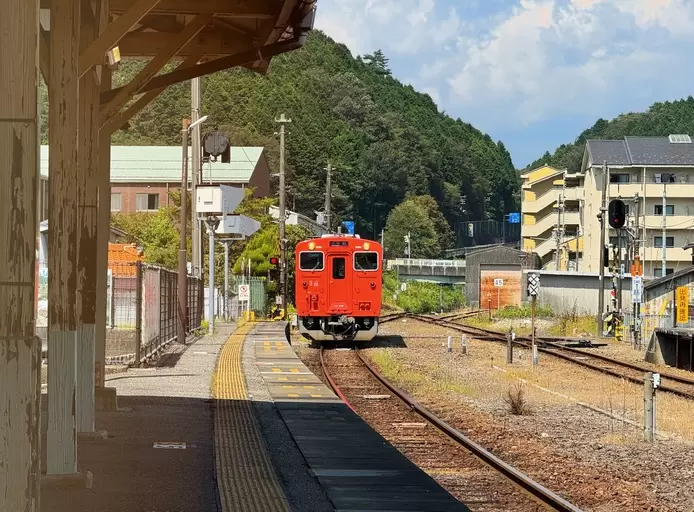
The “one man” red local train (we commonly also refer to it as the the Bantan Train)
To reach Ikuno Station, you can take the charming “wan man” train—a one-way red train that's perfect for photos! The name “wan man” is derived from the katakana pronunciation of “one man,” referring to a train operated by a single person. This red train is part of the Bantan Line, one of Japan's earliest local railways.
Today, the train stops at Ikuno station about once every hour, so you’ll want to check the JR Bantan Time Table carefully if you want a photo of the red train.
What to Expect in Ikuno
Many beautiful homes were built in Ikuno while the mine was still operating, so it’s a great place to enjoy traditional Japanese and French architecture. The town is walkable, with many sightseeing spots near Ikuno Station. You can spend some days strolling around, breathing in the fresh air, enjoying the peaceful surroundings, and meeting kind locals. It's hushed at night—perfect if you're seeking a break from the city’s hustle.
Many of the sightseeing spots can be visited by walking from the train station, but to see further into the countryside I recommend booking a bicycle tour!

Sanginja Shrine in Ikuno
Asago Cycling Tour Experience
One of the best ways to explore Japan’s charming small towns is by bicycle, so I was delighted to join a cycling tour led by Kevin from Asago Cycling. Since 2020, Kevin has been a key advocate for tourism in Hyogo Prefecture, particularly in the towns of Ikuno and Asago within Asago City, where he pioneered bicycle tours. His deep knowledge of the region is remarkable—he not only offers captivating insights into the area’s rich history but also ensures there’s ample time to fully enjoy the serene landscapes.
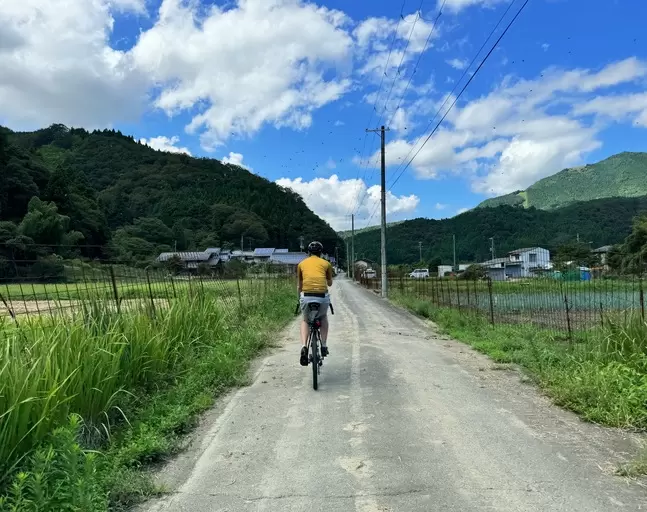
Following Kevin on the e-bike tour
The tour showcases stunning views of lush rice fields, invites you to discover hidden shrines, and best of all, offers warm welcomes from the friendly locals. You’ll also experience tranquil moments of cycling through serene landscapes, where you can savor the soothing sounds of nature and the gentle breeze. It’s a refreshing escape that truly revitalizes the soul!
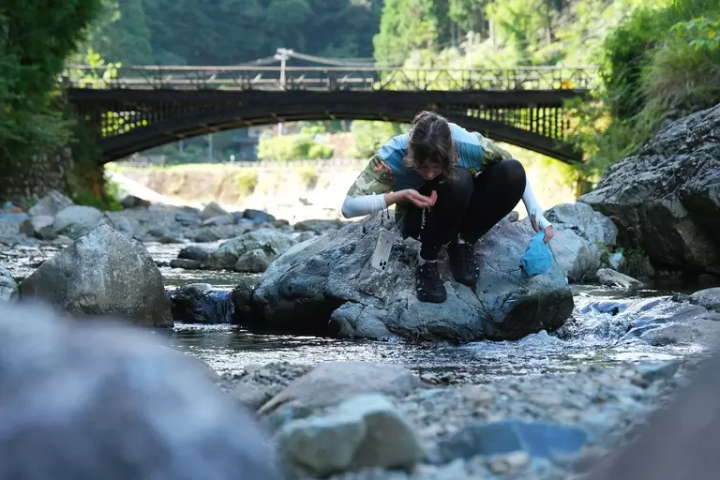
Enjoy cycling through rural Japan and stop at Japan’s oldest cast-iron bridge that still stands today.
Describing the entire tour is a challenge—you really have to experience it for yourself! However, I’ve highlighted some of my favorite spots. I hope this helps guide your own adventure in the area or if you reach out to an Asago Cycling tour with Kevin. Enjoy the journey!
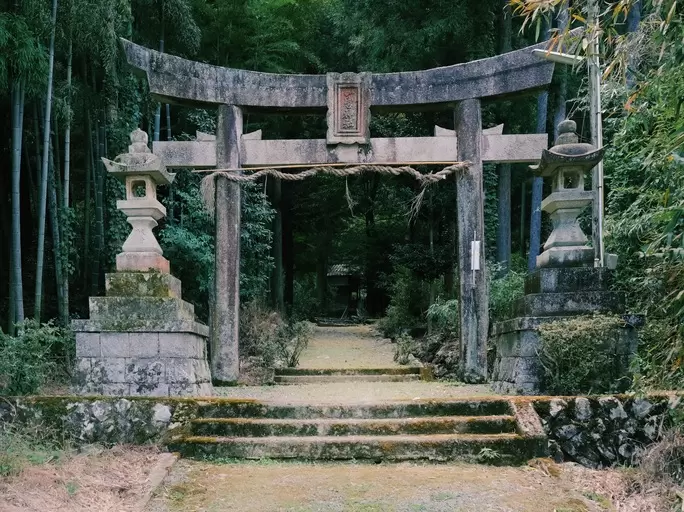
A very old hidden shrine we passed on the Asago Cycling tour.

Making a new friend on my bike tour
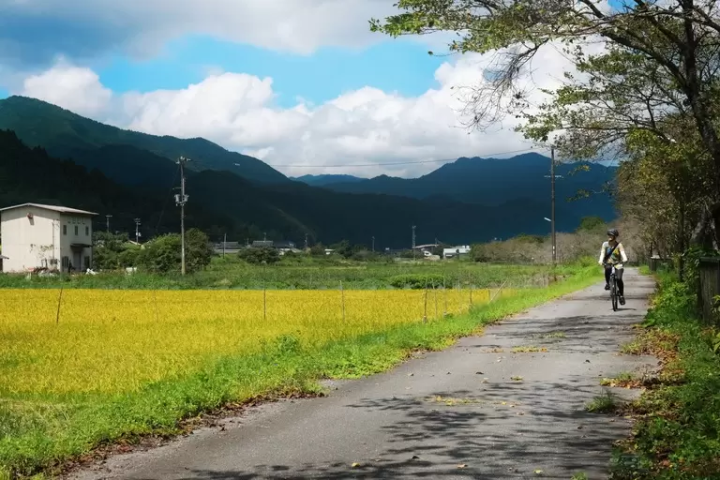
Exploring by e-bike is a great way to see rural areas of Japan
E-bike tours through the rural landscape offer customizable experiences that adapt to the season and weather. Some tours include a delicious bento (Japanese box lunch) prepared by local oba-chan (grandmothers), featuring locally sourced deer meat. Additionally, other meal options can be made upon request, ensuring everyone has a delightful dining experience. This not only supports the community but also helps manage the deer population in the area.
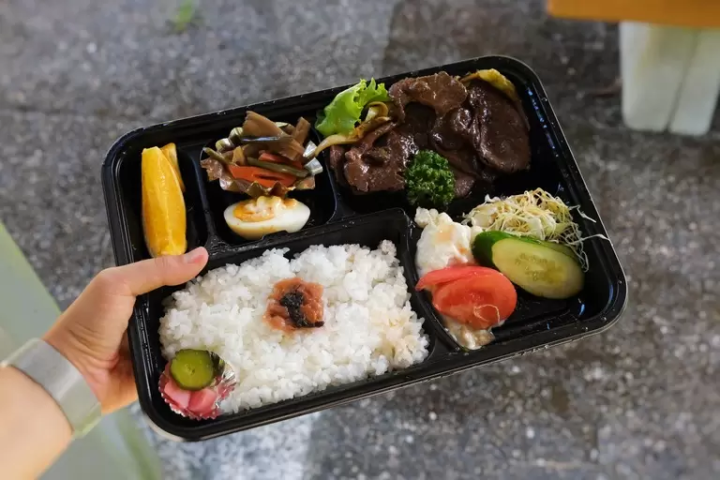
Tasty bento made from local ingredients
During the bicycle tour with Kevin, we saw many beautiful rural views of farms, mountains and rivers. Since I visited during harvest time, the rice fields were tall and golden. I saw a few farmers harvesting rice during my ride, but for the most part the area was quiet.
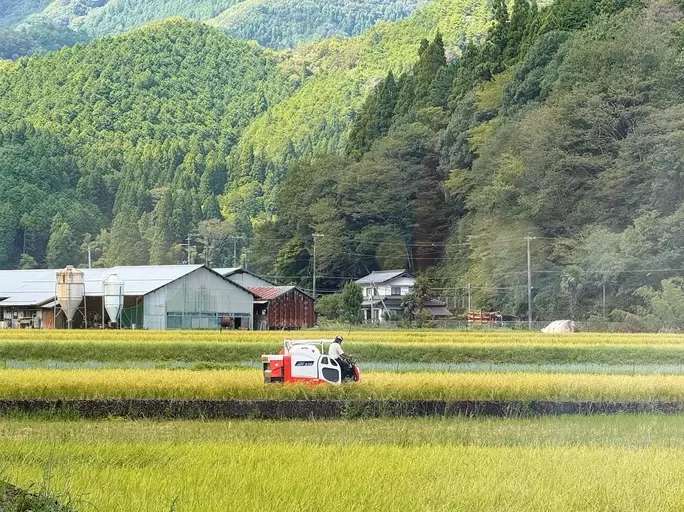
Rural view seen on the bicycle tour
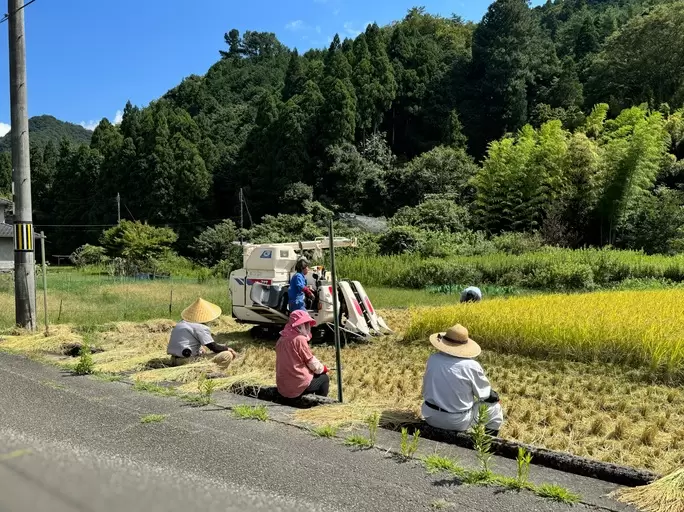
Locals harvesting rice in Asago town on the way to Mikobata
During the Asago Cycling tour, Kevin took me to all of the noteworthy sites in the area, and explained how the history of the mines in Ikuno and Asago shaped the area.
History of Ikuno
For over 1,000 years, Ikuno’s mines buzzed with activity, their tunnels rich with silver that shaped the town's destiny. It wasn't until 1973, when the silver veins finally ran dry, that the mines closed their doors. Today, you can wander through some of these areas, now transformed into fascinating exhibits showcasing Ikuno’s mining history and techniques.
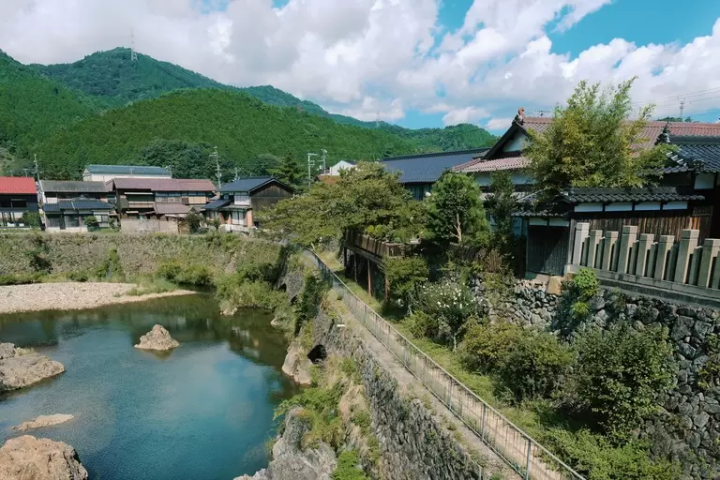
The river and old trolley road in Ikuno
Ikuno’s mining history reached its peak during the Edo period (1603-1868). The Tokugawa shogunate took control of the mines, attracted by the valuable silver, copper, and lead found underground. These metals brought great wealth to Ikuno and played a crucial role in Japan’s economy, strengthening the shogunate's power. This legacy still echoes through the peaceful countryside of Ikuno.
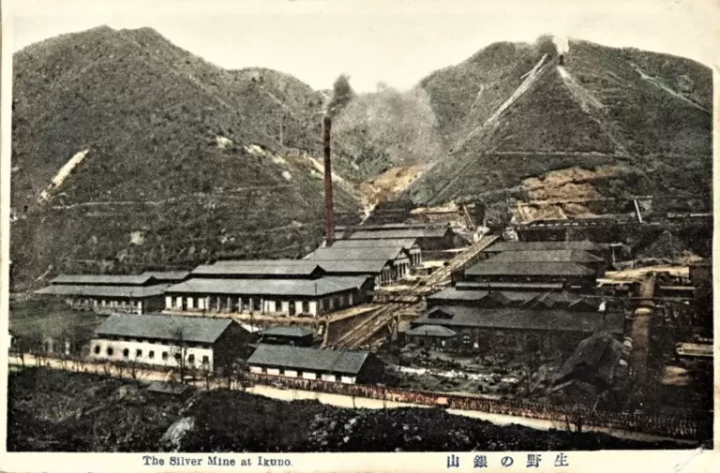
View of the Ikuno silver mine, Japan, 1910
In 1876, during the Meiji era (1868-1898), the mines underwent a fascinating transformation with the aid of French engineers. These engineers didn't just bring their technical skills and infused the area with a touch of French culture, which is still evident in the unique architecture today.
A prime example of this cultural blend is the Mousset House that was relocated from Ikuno to its neighboring town in Mikobata. Constructed between 1871 and 1872, this house was home to French engineers, including Mousset and Coignet, who played a crucial role in the mine's success. The Mousset House is a testament to the rich blend of French and Japanese influences that shaped Ikuno’s history.
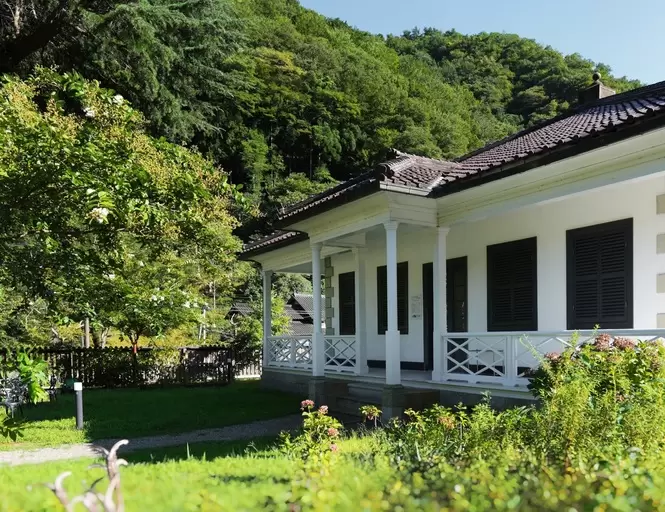
The Mousset House next to the Mikobata Former Ore-processing Facility Ruins in Asago town
The Mousset House showcases a charming colonial architectural style, complete with verandas wrapping around all four sides and unique corner stonework that mimics stacked stones. This striking design highlights a fascinating contrast between Western and Japanese construction styles of the period, reflecting the blending of cultures that shaped Ikuno’s architectural heritage.
Old Ikuno Police Station
Another captivating blend of French and Japanese architecture, the old Ikuno Police Station, now serves as a lively community hub. Built in 1886 by a skilled local carpenter, this unique building stands as a testament to Ikuno's significance and prosperity. Its French-inspired design wasn't just for show—it symbolized the town's rapid modernization during the Meiji era, reflecting Ikuno's openness to new influences while preserving its local charm.
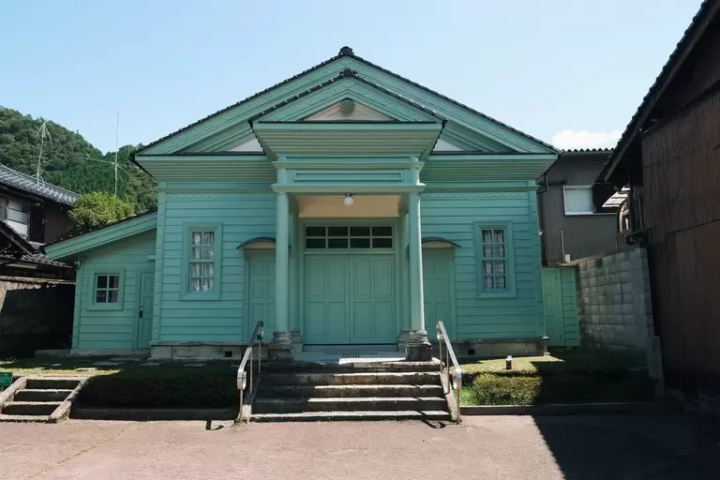
The old Ikuno Police station in Ikuno City
You can't enter the building as it serves as a community center, but it's worth stopping by to see the exterior.
A "Nightless Castle" of Industrial Brilliance - Mikobata Ore Processing Plant Ruins
While many signs of Ikuno's mining past have faded, our biking tour with Kevin brought us to the captivating ruins of the Mikobata Ore Processing Plant, just a short ride from Ikuno to Asago town. Once the largest ore processing plant in the East, it’s a remarkable site that still resonates with historical significance.
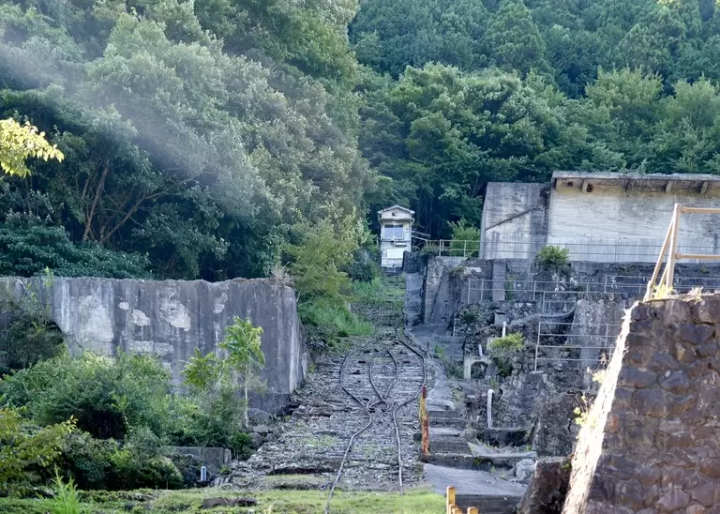
Established in 1919 to process silver and copper ore, the plant was a symbol of Japan's industrial might and modernization. During the Showa era (1926-1989), it expanded dramatically, featuring 22 platforms stretching 110 meters wide and a striking 75-meter height difference. Walking through these ruins, you can almost feel the energy of Japan's industrial boom and imagine the bustling activity of its heyday.
Often called the "nightless castle" due to its around-the-clock operations, the Mikobata Ore Processing Plant was renowned for its cutting-edge gravity concentration techniques that drew global interest.
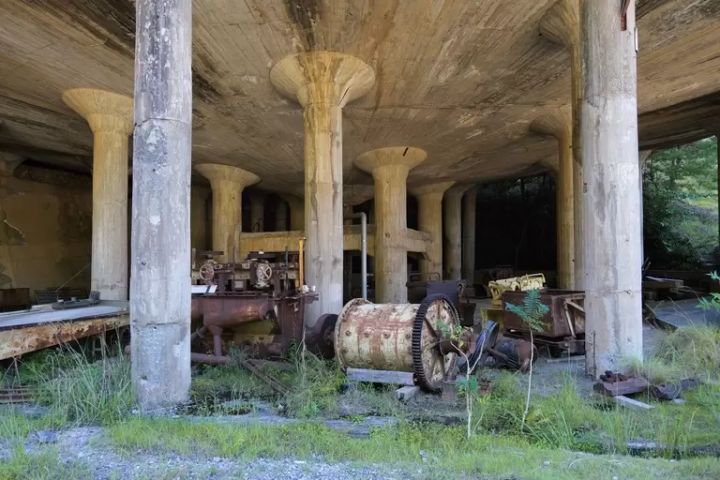
A pilgrimage site for enthusiasts of industrial history
Although the plant shut down in 1987 with the mines, its concrete foundations, thickeners, and inclined railway tracks still stand as a testament to its grandeur. Most of the structure was demolished in 2004, revealing the impressive concrete foundation of what was once a 22-story building stretching 110 meters wide. Today, these ruins have become a fascinating pilgrimage site for enthusiasts of industrial history.
The Ichien Train
The nearby railway tracks are the last remnants of the Ichien “one yen” train line. Originally constructed to transport ore from the mines, the train was repurposed as a passenger service in 1945. For decades, until 1985, it offered a 30-minute journey for just one yen. Although the train no longer runs, you can still see the original train car, a nostalgic reminder of its past.

Inside the original Ichien train car
Staying in a Traditional Japanese Company House
After a full day of exploring the area by bicycle, I was eager to unwind and soak in the peaceful surroundings. As someone who lives in the city, I always cherish the opportunity to spend the night in rural areas, where I can truly appreciate the calm and closeness to nature. Fortunately, I had a wonderful place to stay, which made the experience even more enjoyable.
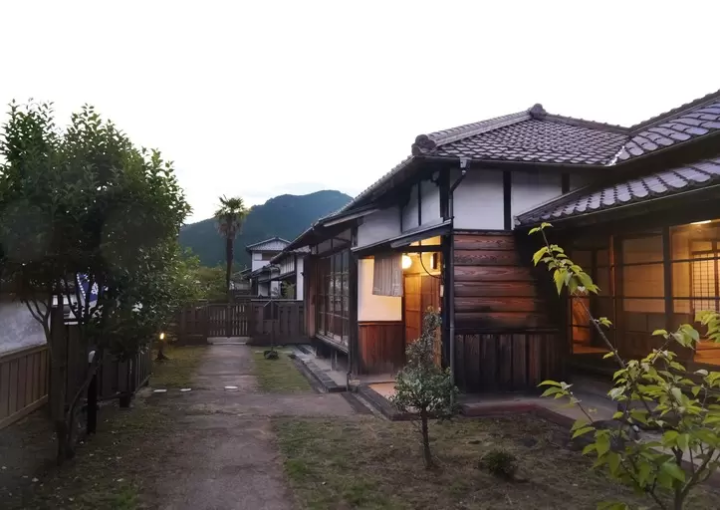
The exterior of Ikuno Stay
Ikuno Stay features two of the oldest company houses in Japan, originally built in 1876 by Mitsubishi. These charming buildings, full of traditional Japanese style, once housed employees of the Ikuno mine. I stayed in the Koushataku house, also known as Building No. 9.
Originally a dormitory for mine workers, Koushataku has been updated and expanded over the years, including renovations during the Taisho (1912-1926) and Showa eras. The building now has modern touches like glass doors, updated electricity, and plumbing, but it still boasts its original charm. Inside, you'll find vintage appliances and items that give a nostalgic feel.
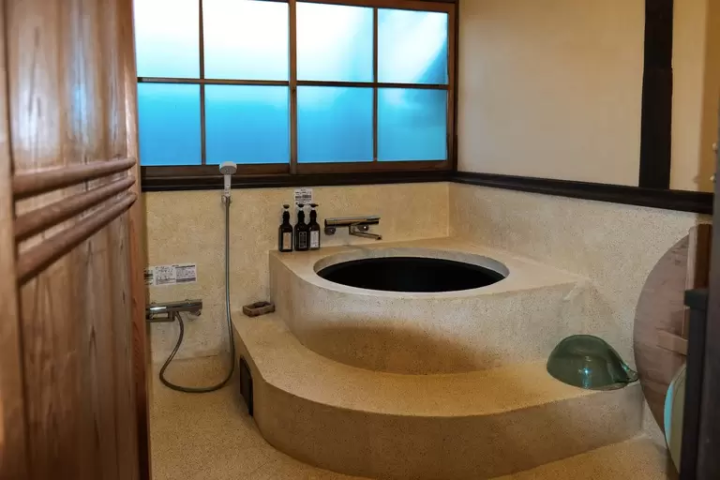
The stone bathtub inside Koushataku aka building #9
The remaining buildings are like an interactive museum- filled with classic Showa era items that are still in use. The kitchen is full of vintage kitchen appliances. During my stay, I saw an older Showa style washing machine, a sewing machine, a TV and many other vintage items. However, it’s delicate, so be cautious—it’s not ideal for families with young children.
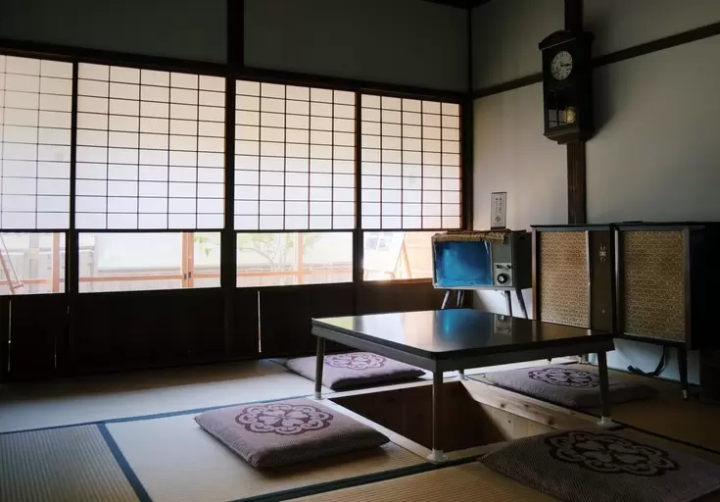
There are many vintage items inside Ikuno Stay

Inside my room at Ikuno Stay
I enjoyed making coffee in the kitchen and relaxing while looking over the garden. Although there isn’t any food served at this hotel, there is a convenience store not so far from the hotel. To book this place, please use the official site.
For bike tours visit: Asago Cycling official site: https://www.asagocycling.com/
Why Ikuno should be your next destination
Ikuno’s friendly locals and charming atmosphere make it a perfect escape from the hustle and bustle of Himeji or any other big city in Japan. This small town is not only easy to reach but also ideal for a relaxing day trip or a quiet overnight stay. The remnants of its mining history give Ikuno a unique character, blending traditional Japanese charm with intriguing historical depth. With its picturesque farms and expansive rice fields, Ikuno offers an authentic glimpse into rural Japanese life!
Welcome to Hyogo Hyogo is a gateway to the Kansai region, which nurtures the blessed land that connects the Sea of Japan, the Chugoku Mountains, and the Seto Inland Sea, as well as the blessed climate. There are many spectacular views that will catch your eye, such as Himeji Castle, a World Heritage Site that was selected as one of the 100 Best Cherry Blossom Spots, and the panoramic night view from Mt. Rokko. The world-famous Kobe brand, KOBE BEEF, which is synonymous with Tajima beef, is one of Japan's leading beefs, and the sake rice ``Hyogo Yamada Nishiki'' is a gem that will surprise your tongue. Arima Onsen is a famous hot spring, and Kinosaki Onsen has appeared in many literary works. Surrounded by nature, you can relax your mind and body. You can come across memorable sounds such as the thunderous sounds of the whirlpools of Naruto on Awaji Island, and the dynamic sounds of the fireworks festivals held in various places in the summer. In the herb gardens and botanical gardens in the prefecture, you will be healed by the gentle and pleasant scent of herbs and flowers throughout the four seasons. Enjoy a new journey in Hyogo that stimulates the five senses of sight, taste, touch, hearing, and smell.
The contents on this page may partially contain automatic translation.































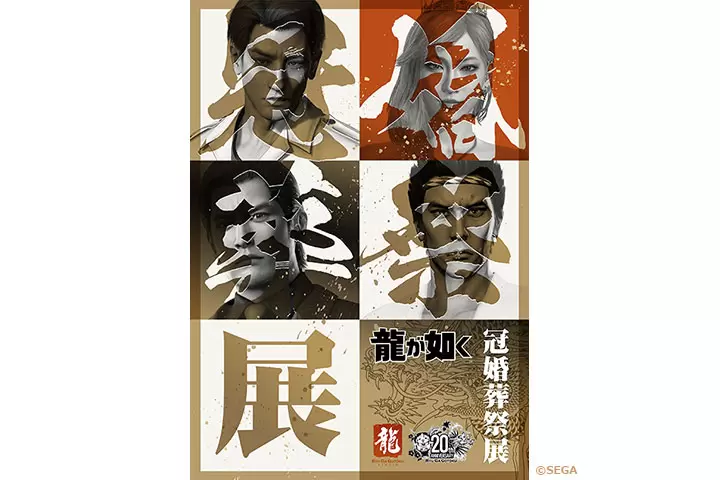
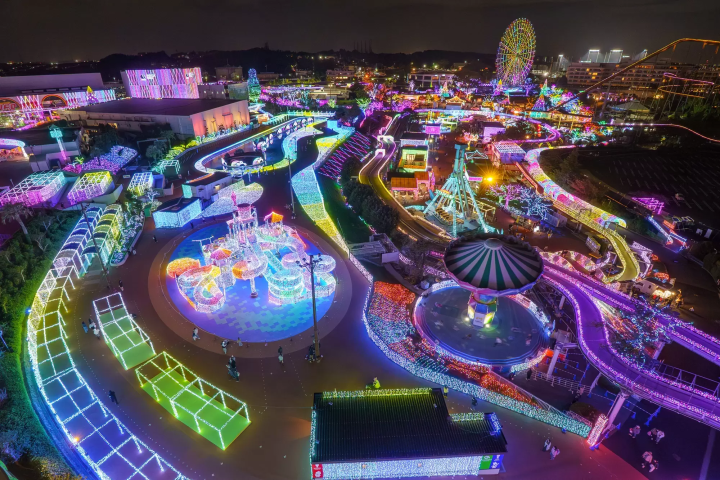
![[Coupon Available] Recommended Fall/Winter Wear from Scandinavian Brand "Helly Hansen"](https://resources.matcha-jp.com/resize/720x2000/2025/12/15-252920.webp)
![Deep dive into Japanese brands! A tour of famous leather shoe stores with GENSEI & Nin [Otsuka Shoes Edition]](https://resources.matcha-jp.com/resize/720x2000/2025/12/15-252972.webp)